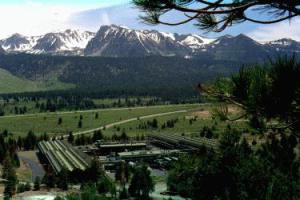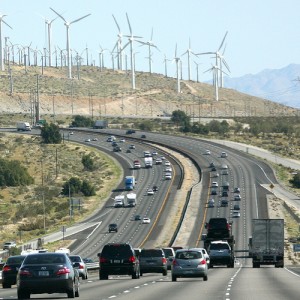09 Sep Comparing and Contrasting EGS with Other Forms of Renewable Energy
Renewable energy presents clear and widely-touted environmental and security advantages over non-renewable sources. But renewables are not interchangeable. Beyond their base similarities, wind, solar, and geothermal energy each presents a unique scenario of power output, cost, implementation requirements, land use, visual impact, and other factors.
To emphasize renewable energy is an important first step. But we must look beyond that broad category at the specific technologies in question. The following comparison explores some of the differences between the leading renewable energy types, including geothermal in general, EGS in particular, wind, and solar power.
Current and Potential Output
In places such as California, Hawaii, Utah and Nevada, current geothermal output is comparable to that of wind and solar combined. “And the potential is far greater still,” notes MIT’s 2007 EGS study, “since hot rocks below the surface are available in most parts of the United States.”
Here’s what things look like right now, and where they have the potential to go in the future:
- Geothermal: Currently, geothermal energy has almost 3100 megawatts online. Another 7,000 megawatts are currently in development, and the nation’s total geothermal resources are estimated to possess several times the total energy required by the United States.
- EGS: A 2008 study by MIT finds that EGS technology, if adequately funded and developed, will be able to supply 100 gigawatts of power (10% of the nation’s energy needs) by 2050. The USGS estimates that total EGS potential is 518 gigawatts, which is well above the 470 gigawatts currently consumed in the U.S.
- Wind: In 2008, actual wind power generation amounted to about 55,363,100 megawatt-hours of energy with an annualized equivalent of about 6300 MW. An initiative is under way to make wind power account for 20% of the national energy supply by 2030. However, this will require the number of yearly turbine installations to increase from 2,000 to 7,000, which presents a number of environmental, manufacturing, infrastructure, and maintenance challenges.
- Solar: In 2008, installed solar power in the U.S. consisted of 539 megawatts. Similar to wind, the expansion of solar power is limited by location and land use, equipment costs, and manufacturing. The U.S. Department of Energy recognizes a number of additional challenges, discussed under “Efficiency and Preparedness” below.
System Availability and Capacity Factor
via U.S. Department of Energy
Because geothermal heat sources do not vary due to external factors, they are by far the most consistent source of renewable energy. Geothermal power plants can run almost 24/7, and system availability for geothermal power is up to 95%.
By contrast, solar panels (called PV, for “photovoltaics,” above) collect sunlight only during daylight hours, and even then are impacted by “location, time of day, time of year, and weather conditions,” notes the U.S. Energy Information Administration. Because of these factors, solar panels produce less than 25% of the energy capacity for which they are rated, one of the lowest rates in the industry.
Wind power, too, depends on weather patterns, smog levels, terrain, and vegetation; nearby development can potentially alter wind patterns. Modern wind turbines produce electricity between 70% and 85% of the time, but because wind speed varies, so does the amount of electricity being produced. All told, an average wind turbine generates only about 30% of the machine’s rated capacity over the course of a year.
Efficiency and Preparedness
According to the New York Times, “the nation’s electricity providers [are] scrambling to develop energy storage to ensure stability and improve profits” from wind farms. Solar power is in much the same boat.
Due to the irregularity of clear sunlight and strong winds, solar and wind installations sometimes supply more power than is necessary, and other times supply less. Because there is currently no way to store large amounts of power, the excess power from peak times cannot be saved to use when production is lower. As a result, utility companies cannot rely on these installations to supply their rated power 24/7 and so must rely on a backup source: typically coal or gas. Ideally, geothermal energy would be able to fill this role as well.
The U.S. Department of Energy notes a number of additional challenges to solar energy, including “inconsistent interconnection, net metering, and utility rate structures and practices for solar systems” as well as “limited education for and insufficient numbers of trained and experienced personnel and services.”
EGS, though a developing technology, does not have the same technological limitation faced by wind and solar. In addition to being a constant, baseload source of power, EGS benefits from a well-established geothermal infrastructure and highly-trained, experienced geothermal engineers and maintenance technicians. Though EGS’s method for harnessing heat is slightly adapted from traditional geothermal acquisition, the process by which that heat is converted to energy, stored, and made available is almost identical to the proven infrastructure already in place.
Cost
Advancements in wind power, solar power, and EGS all require up-front costs for technological development and initial implementation. But as noted above, EGS has the benefit of effective, cost-efficient infrastructure that is already in place. Concerning the cost of energy itself, here is the current price-per-kilowatt hour for each of these renewables:
- Geothermal: $.06-$.10 per kilowatt hour.
- EGS: Presently undetermined. MIT estimates that after initial development, energy from EGS will be comparable in price to energy from popular non-renewable resources.
- Wind: $.04-$.07 per kilowatt hour.
- Solar: $.21-$.081
Land Use and Visual Impact
Concerns about land use and visual impact are often voiced by communities considering renewable energy development, and each type of power presents a markedly different scenario. Broadly speaking, each form of energy corresponds with the direct source of that energy.
Geothermal: The U.S. Department of Energy commends geothermal energy for how easily its heating systems can be integrated into communities: “with almost no visual impact.” In the case of geothermal power plants, they “use relatively small acreages, and don’t require storage, transportation, or combustion of fuels. Either no emissions or just steam are visible. These qualities reduce the overall visual impact of power plants in scenic regions.”
EGS: The visual impact of EGS in particular is comparable to that of geothermal energy in general. As noted by MIT researchers, EGS’s
energy capture and extractionoccur entirely underground, and the surface equipment needed for conversion to electricity is relatively compact. In addition, great amounts of power can be gotten from a single location, so EGS requires only a small number of sites to provide large amounts of electricity.
Solar & Wind: Wind and sunlight are literally up in the air, so by default these technologies need to be out in the open to work optimally. This renders them both far more visible than any geothermal system. They also require more units to provide adequate power, according to the U.S. Energy Information Administration: “Because the sun doesn’t deliver that much energy to any one place at any one time, a large surface area is required to collect the energy at a useful rate.” Wind farms are much the same way, with dozens of 200-300 foot-tall turbines spread over multiple acres of land. As noted above, turbine installation rates will need to more than triple to meet established energy goals through wind power.
Renewable energy development, in any form, is an improvement over current reliance on non-renewable energy. But to create the best possible national energy infrastructure, we need to adopt an enthusiastic yet critical approach to the various avenues before us.
AltaRock Energy and Davenport Newberry are confident in the advantages that geothermal energy and EGS present to both local communities and to the nation as a whole. With unmatched reliability, proven infrastructure, competitive costs, and minimal visual impact, EGS is poised to supply vast amounts of power per location, and to do so in a way that is beneficial across the board.







Sorry, the comment form is closed at this time.